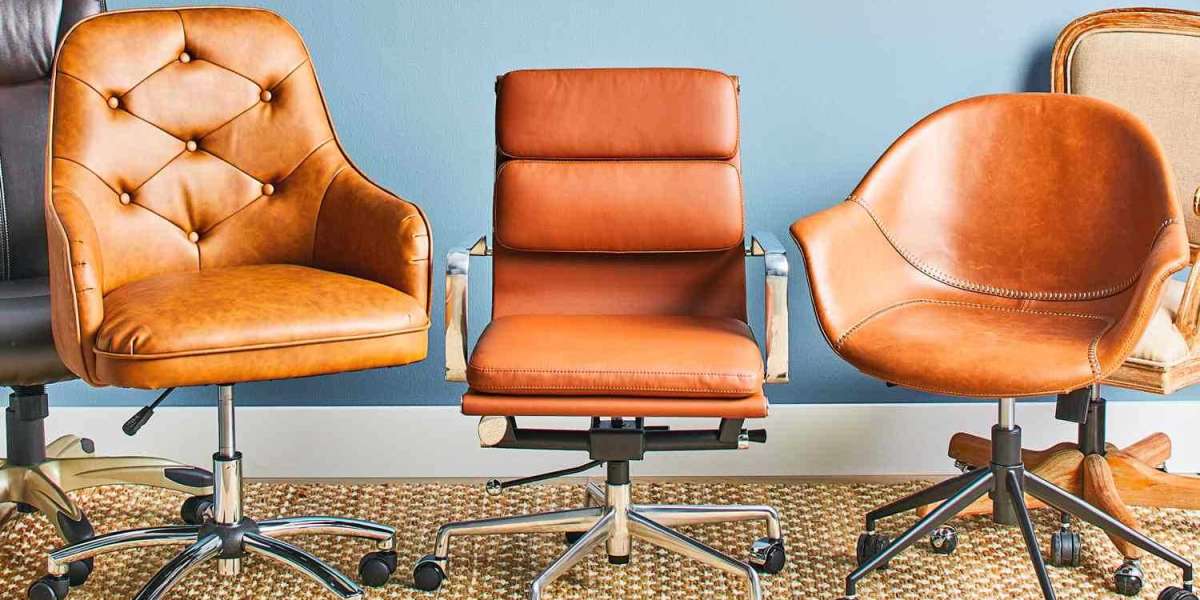Selecting the right office chair is crucial for creating a comfortable and productive work environment. With so many options available, it can be overwhelming to choose a chair that meets your specific needs. This guide will walk you through the essential factors to consider when choosing the perfect office chair for your workspace.
1. Understand Your Needs
Before diving into chair features, assess your specific needs and work environment. Consider the following questions:
- How many hours will you spend sitting daily? For long hours, prioritize ergonomic features.
- What is the size of your workspace? Ensure the chair fits well in your office layout.
- Do you have any specific health concerns? Look for chairs with lumbar support if you have back issues.
2. Ergonomic Features
Ergonomic chairs are designed to support your body and promote good posture. Key ergonomic features to look for include:
- Adjustable Lumbar Support: Helps maintain the natural curve of your spine and reduces lower back pain.
- Seat Height Adjustment: Allows you to set the chair at the right height for your desk and ensure your feet are flat on the ground.
- Seat Depth Adjustment: Ensures you can sit comfortably without putting pressure on your thighs.
- Adjustable Armrests: Prevents shoulder strain and allows for a more natural arm position.
- Recline and Tilt Mechanisms: Provides flexibility to change sitting positions and relieve pressure on your spine.
3. Material and Build Quality
The material of the chair affects comfort and durability. Common materials include:
- Mesh: Breathable and ideal for warm environments, but may lack cushioning.
- Leather: Offers a luxurious feel and is easy to clean but may be less breathable.
- Fabric: Provides comfort and variety but may require more maintenance.
Additionally, ensure the chair has a sturdy build with high-quality materials. Check the weight capacity and warranty to ensure durability.
4. Size and Fit
A chair should fit your body size and workspace. Consider:
- Chair Dimensions: Ensure the chair’s dimensions match your desk and work area.
- Adjustability: Look for a chair that offers a wide range of adjustments to accommodate different body types.
- Seat Width and Depth: The seat should be wide enough for comfort and deep enough to support your thighs without pressure.
5. Style and Design
While comfort is paramount, the chair’s style should also complement your workspace. Consider:
- Design: Choose a design that matches your office aesthetic, whether it’s modern, traditional, or minimalist.
- Color: Select a color that fits with your office decor and personal preference.
6. Mobility and Stability
If you need to move around frequently, consider:
- Caster Wheels: Ensure the chair has wheels suitable for your flooring (e.g., carpet or hard floors).
- Base Stability: A five-point base provides stability and reduces the risk of tipping.
7. Testing the Chair
If possible, test the chair before purchasing. Sit in it for a few minutes to assess comfort, adjustability, and support. Pay attention to:
- Comfort: Does the chair feel comfortable over extended periods?
- Adjustments: Are the adjustments easy to make?
- Support: Does the chair provide adequate support for your back and neck?
8. Budget Considerations
Office chairs come in a wide range of price points. While investing in a high-quality chair can be beneficial, it’s important to find one that fits your budget. Consider:
- Value for Money: Look for chairs that offer a good balance of features and price.
- Warranty and Support: Check if the chair comes with a warranty and customer support in case of issues.
9. Read Reviews and Ratings
Before making a final decision, read customer reviews and ratings. They can provide valuable insights into the chair’s comfort, durability, and overall performance. Look for reviews from users with similar needs and preferences.
10. Consider Future Needs
Think about potential changes in your work environment or personal needs. Opt for a chair that can adapt to future changes or adjustments, ensuring long-term satisfaction and comfort.
Conclusion
Choosing the right office chair involves considering ergonomic features, material quality, size, design, and budget. By understanding your specific needs and evaluating different options, you can find a chair that enhances comfort, productivity, and overall well-being in your workspace. Investing time in selecting the right chair will pay off in increased comfort and a more enjoyable work experience.








